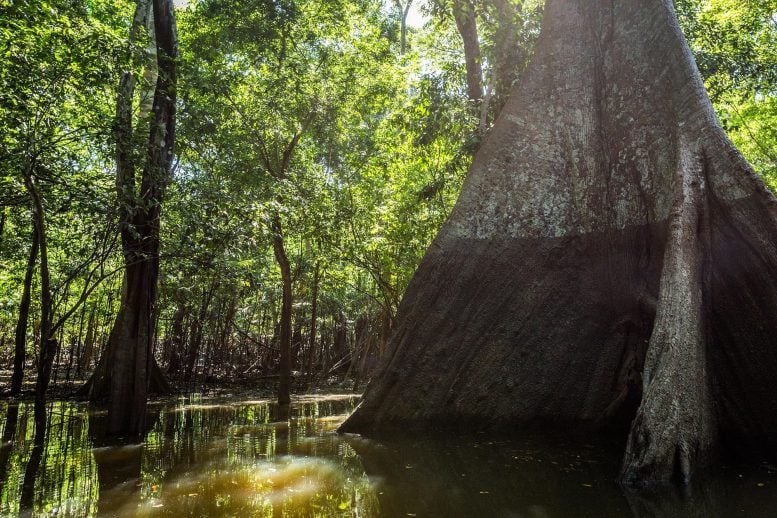
The scientists discovered that even if a dry period just impacts one particular section of the forest, the damage it causes extends beyond that zone by a factor of one to three.
A new network analysis simulates the cascading impacts of rising droughts on South American ecosystems.
In the Amazon rainforest, for every three trees that die due to drought, a fourth tree dies as well, even if it is not directly impacted. In simplified terms, that’s what recent research published in the journal Proceedings of the National Academy of Sciences discovered.
The Potsdam Institute of Climate Action Research team, led by Nico Wunderling, employed network analysis to understand the complicated workings of one of Earth’s most valuable and biodiverse carbon sinks. The areas most vulnerable to transformation to savannah are on the forest’s southern outskirts, where continuous clearance for pasture or soy has already weakened the forest’s resilience for years.
Ripple effect
As climate change causes increasingly frequent and severe dry periods in the Amazon Basin, the rainforest in South America may lose its rain and, with it, its moisture supply. The forest is threatened by a lack of rain because it breathes water: when it rains, the soil absorbs as much as the plants, and both release a large quantity back via evaporation and transpiration. The forest creates most of its own weather through this atmospheric moisture recycling, generating up to half of the rainfall in the Amazon Basin. And, although it is incredibly effective, the moisture recycling system ultimately depends on how much water is initially put into the system.
The research team has discovered that even if a dry spell just impacts one particular section of the forest, the damage it causes extends beyond that region by a factor of one to three. Because a lack of rain reduces the amount of water recycled, there will be less rainfall in neighboring areas, placing even more sections of the forest under serious stress.
“More intensive droughts put parts of the Amazon rainforest at risk of drying off and dying. Subsequently, due to the network effect, less forest cover leads to less water in the system overall, and hence disproportionately more harm,” Wunderling explains. “And while we’ve investigated the impact of drought, that rule also holds for deforestation. It means essentially, when you chop down one acre of forest, what you actually are destroying is 1.3 acres.”
A new climate normal
Climate science predicts that what used to be extraordinarily dry years, like 2005 and 2010, may well become the new normal from 2050 onwards, with centennial droughts occurring in up to nine out of ten years by 2060. “These recurrent droughts are already producing quantifiable changes to the Amazon’s moisture network,” explains Henrique Barbosa, co-senior author of the study and assistant professor of physics at the University of Maryland, Baltimore County. “We use these observations to understand and model the consequences of a future climate that resembles a permanent drought state.”
But droughts have different effects on forest systems within the Amazon. “In the Amazon, trees and forest systems are differently adapted to water availability, as some regions commonly exhibit a distinct dry season while others have rain all year round. We specifically acknowledge these local adaptations as they can be a blessing or a curse under climate change,” adds Boris Sakschewski, a co-author of the study at the Potsdam Institute.
“So we find that even the dry season-adapted parts of the Amazon forest won’t necessarily survive a new climate normal, and the risk of tipping into savannah or no trees at all is high,” Sakschewski adds. “The consequences for biodiversity would be disastrous, but the same goes for the local, regional, and global climate.”
Still much to do
“Yet not all is lost,” says Ricarda Winkelmann, co-senior author of the study and leader of tipping elements research at the Potsdam Institute. “That is because a good part of the forest is still in relatively stable conditions. The network effects of dry spells are likely limited to certain areas in the forest’s southeast and southwest—which happen to be those areas where the forest has been suffering from the human hand already, in clearing forest for pasture or soy.”
“There is still a lot we can do to try and stabilize the Amazon, as preserving it and its ecological services is of utmost importance for local, regional and global climate stability,” Winkelmann says. “And we know how we can do that: by protecting the rainforest from logging, and by rapidly reducing greenhouse gas emissions to limit further global warming.”
Reference: “Recurrent droughts increase risk of cascading tipping events by outpacing adaptive capacities in the Amazon rainforest” by Nico Wunderling, Arie Staal, Boris Sakschewski, Marina Hirota, Obbe A. Tuinenburg, Jonathan F. Donges, Henrique M. J. Barbosa and Ricarda Winkelmann, 2 August 2022, Proceedings of the National Academy of Sciences.
DOI: 10.1073/pnas.2120777119
The study was funded by the German Research Foundation, the Sao Paulo Research Foundation, the German Academic Scholarship Foundation, the Leibniz Association, the European Research Council, the Dutch Research Council, the German Federal Ministry of Education and Research, The Netherlands Organisation for Scientific Research Innovational Research Incentives Schemes Veni, the Stordalen Foundation, and the Brazilian National Council for Scientific and Technological Development.

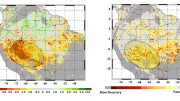
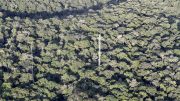
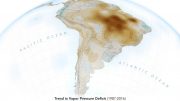
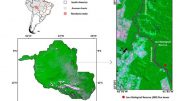
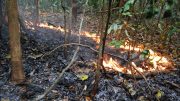
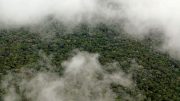
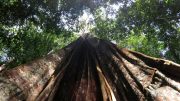

“As climate change causes increasingly frequent and severe dry periods in the Amazon Basin, the rainforest in South America MAY lose its rain and, …”
That should be “If,” not “As.” Even the authors implicitly acknowledge that by their choice of the word “may.” The facts supporting the assumption are not in evidence.
When ‘hand waving’ associated with ambiguous words such “may,” “could,” “might,” or “possibly” are replaced with high numeric probabilities and associated uncertainty ranges, I’ll sit up and pay more attention. In the meantime, the claims are little better than speculations. It appears that there are far too many ‘researchers’ more concerned about fattening their CVs and publication list than they are discovering the Truth.
“… by rapidly reducing greenhouse gas emissions to limit further global warming.”
COP-26 concluded with a commitment to reducing global methane emissions. The Amazon basin is a, if not the most, prolific source of methane. The only way to reduce those emissions is to dry out the Amazon. That would be undesirable for many reasons. However, I’m left with the impression that these authors have not thoroughly examined the issue. They have focused on a narrow aspect with their network analysis approach, and don’t seem to grasp the Big Picture.